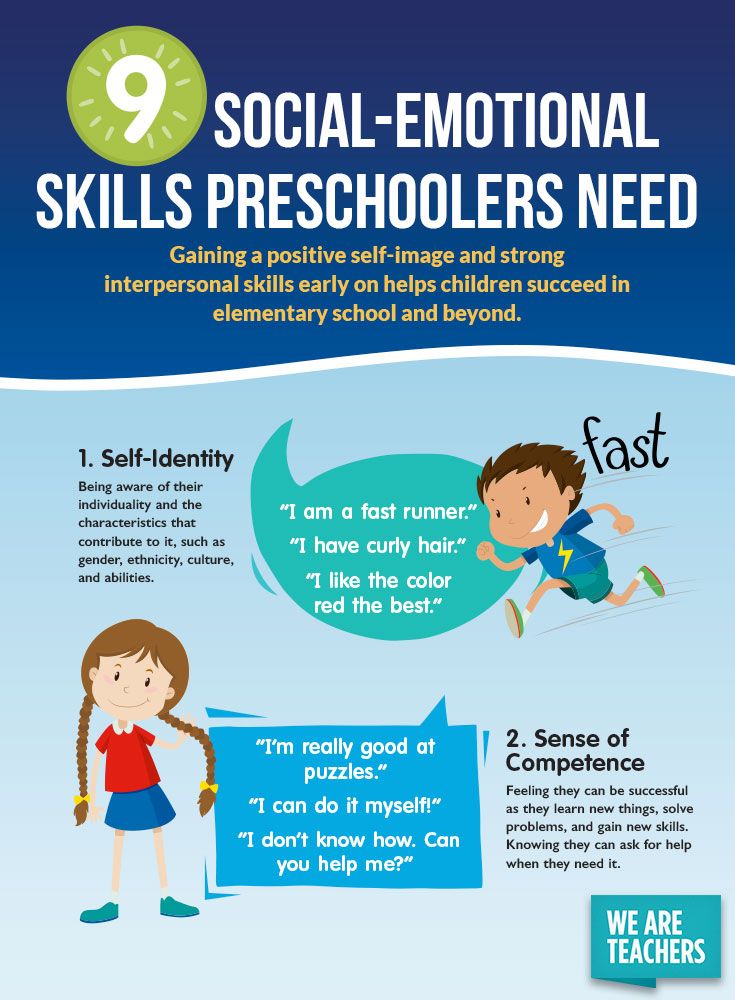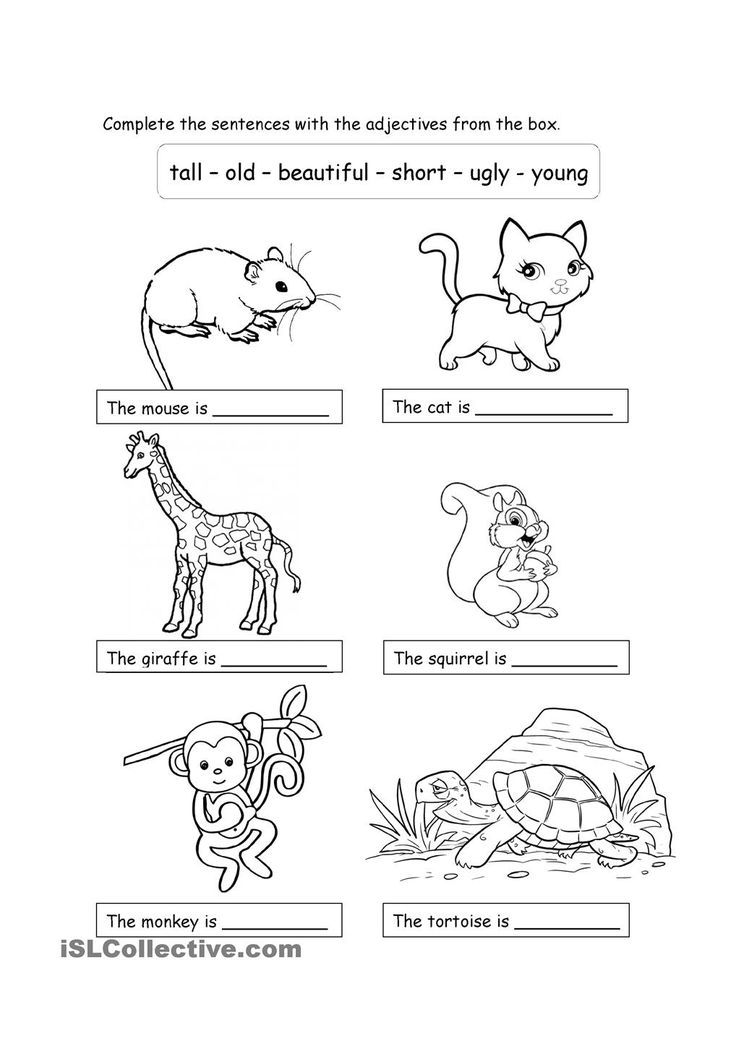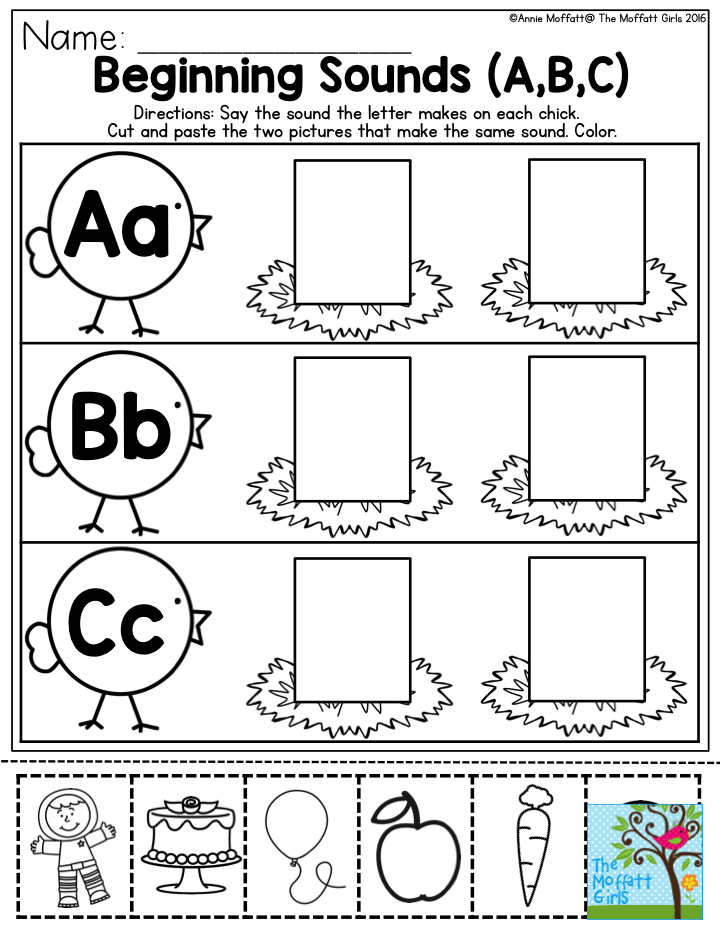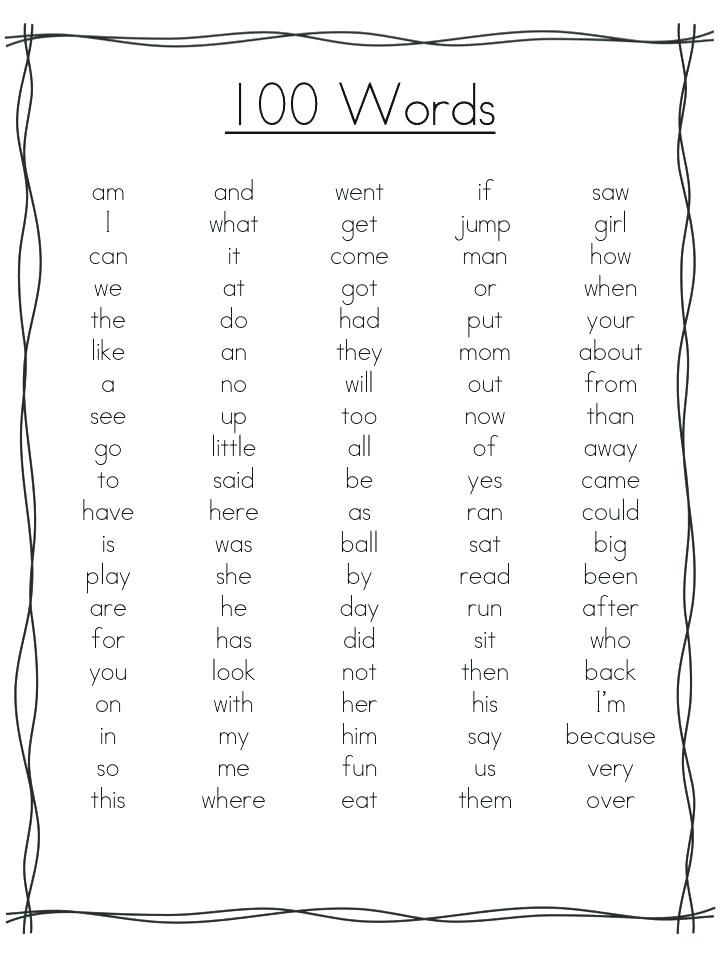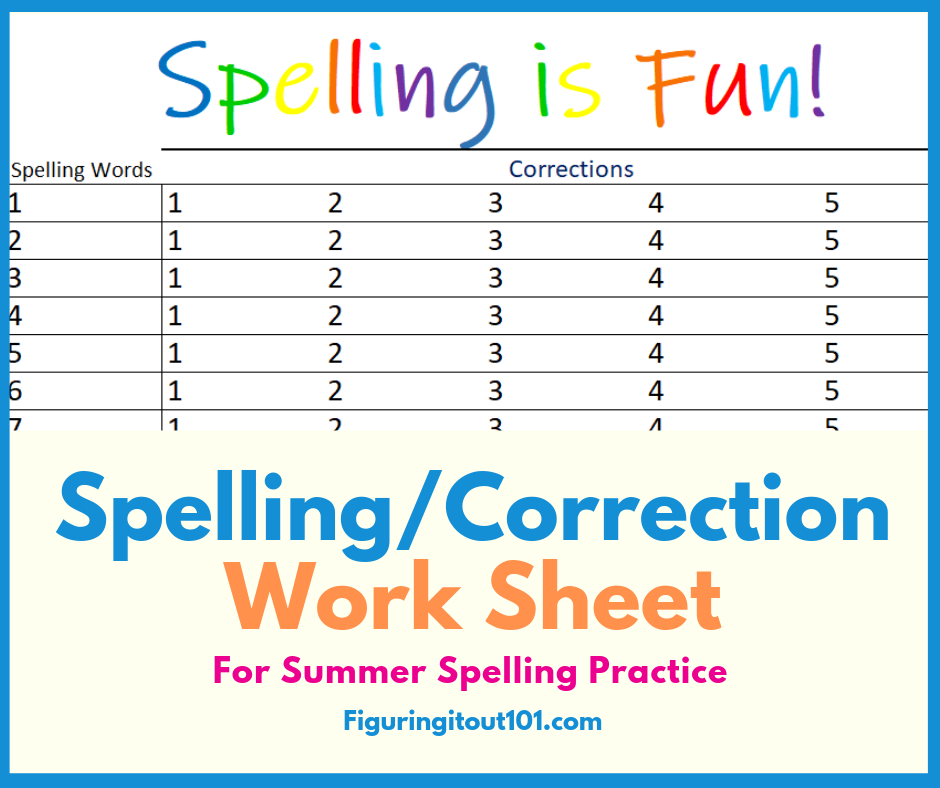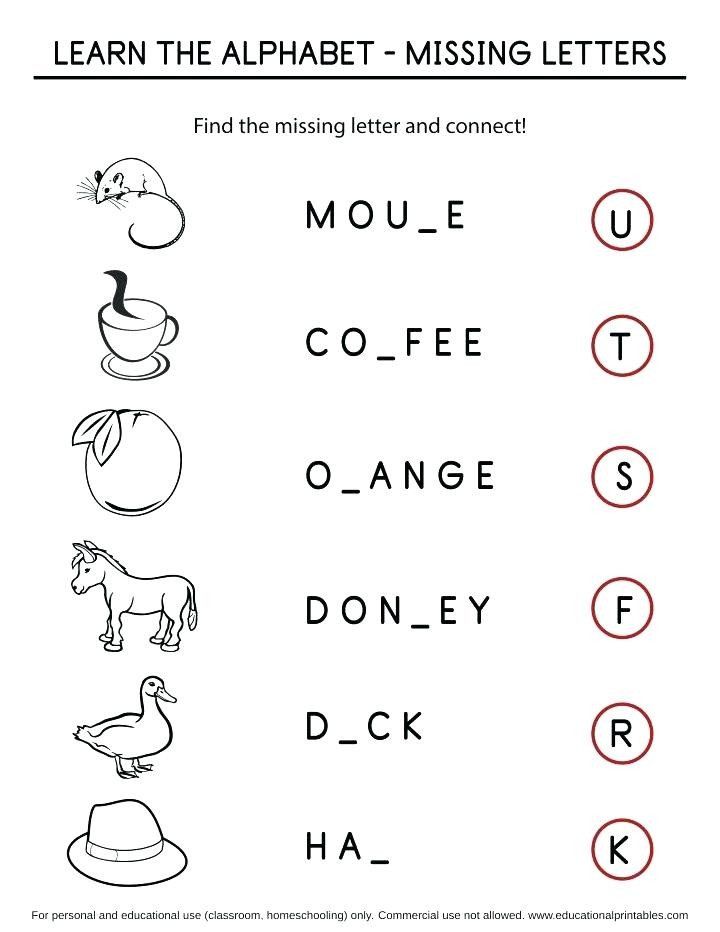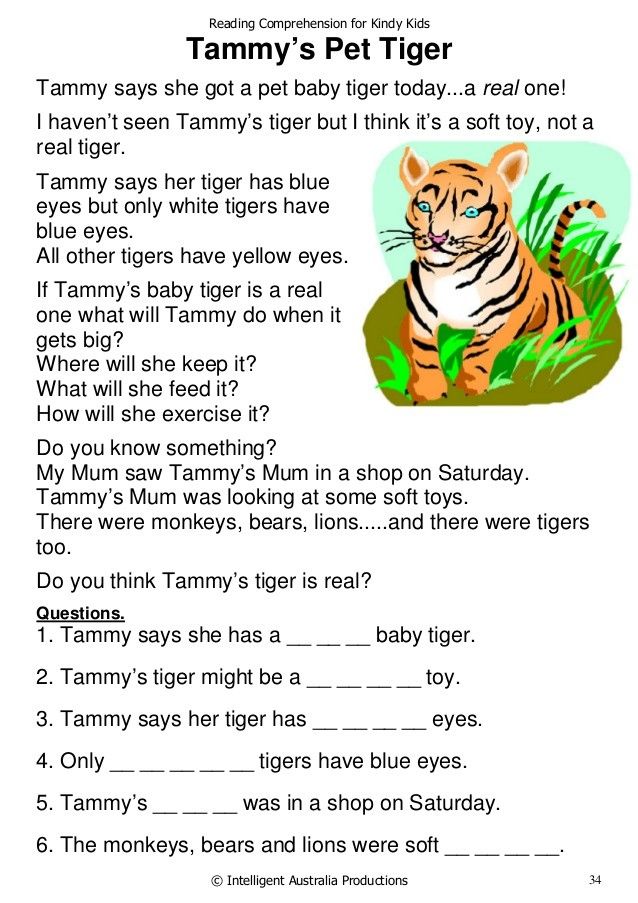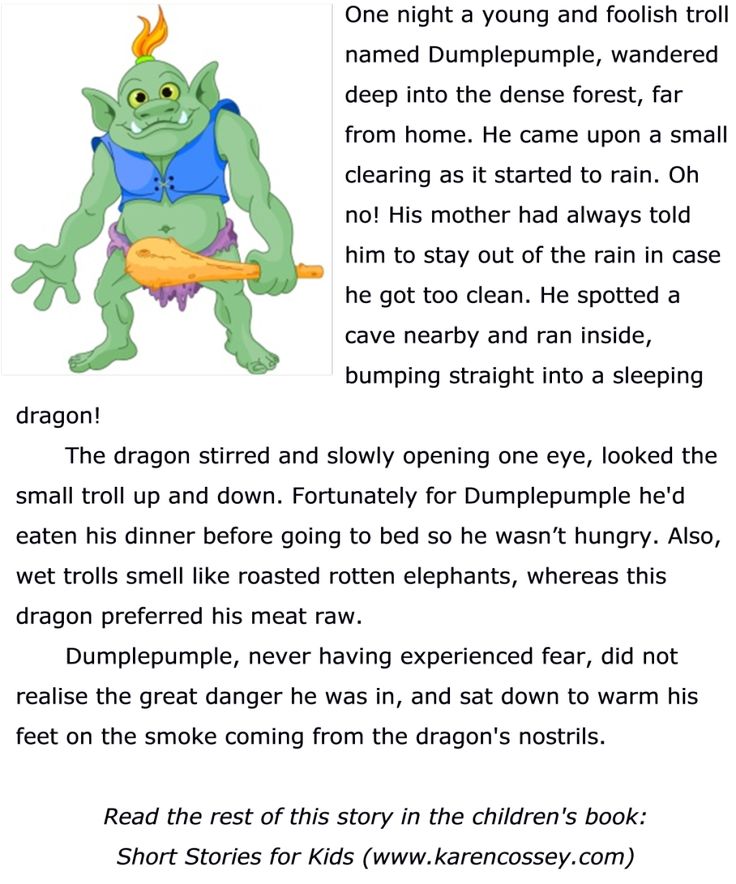Reading skills for preschoolers
Reading Development and Skills by Age
Even as babies, kids build reading skills that set the foundation for learning to read. Here’s a list of reading milestones by age. Keep in mind that kids develop reading skills at their own pace, so they may not be on this exact timetable.
Explore related topics
Reading and writing
Babies (ages 0–12 months)
- Begin to reach for soft-covered books or board books
- Look at and touch the pictures in books
- Respond to a storybook by cooing or making sounds
- Help turn pages
Toddlers (ages 1–2 years)
- Look at pictures and name familiar items, like dog, cup, and baby
- Answer questions about what they see in books
- Recognize the covers of favorite books
- Recite the words to favorite books
- Start pretending to read by turning pages and making up stories
Preschoolers (ages 3–4 years)
- Know the correct way to hold and handle a book
- Understand that words are read from left to right and pages are read from top to bottom
- Start noticing words that rhyme
- Retell stories
- Recognize about half the letters of the alphabet
- Start matching letter sounds to letters (like knowing b makes a /b/ sound)
- May start to recognize their name in print and other often-seen words, like those on signs and logos
Kindergartners (age 5 years)
- Match each letter to the sound it represents
- Identify the beginning, middle, and ending sounds in spoken words like dog or sit
- Say new words by changing the beginning sound, like changing rat to sat
- Start matching words they hear to words they see on the page
- Sound out simple words
- Start to recognize some words by sight without having to sound them out
- Ask and answer who, what, where, when, why, and how questions about a story
- Retell a story in order, using words or pictures
- Predict what happens next in a story
- Start reading or asking to be read books for information and for fun
- Use story language during playtime or conversation (like “I can fly!” the dragon said.
“I can fly!”)
Younger grade-schoolers (ages 6–7 years)
- Learn spelling rules
- Keep increasing the number of words they recognize by sight
- Improve reading speed and fluency
- Use context clues to sound out and understand unfamiliar words
- Go back and re-read a word or sentence that doesn’t makes sense (self-monitoring)
- Connect what they’re reading to personal experiences, other books they’ve read, and world events
Older grade-schoolers (ages 8–10 years)
- In third grade, move from learning to read to reading to learn
- Accurately read words with more than one syllable
- Learn about prefixes, suffixes, and root words, like those in helpful, helpless, and unhelpful
- Read for different purposes (for enjoyment, to learn something new, to figure out directions, etc.)
- Explore different genres
- Describe the setting, characters, problem/solution, and plot of a story
- Identify and summarize the sequence of events in a story
- Identify the main theme and may start to identify minor themes
- Make inferences (“read between the lines”) by using clues from the text and prior knowledge
- Compare and contrast information from different texts
- Refer to evidence from the text when answering questions about it
- Understand similes, metaphors, and other descriptive devices
Middle-schoolers and high-schoolers
- Keep expanding vocabulary and reading more complex texts
- Analyze how characters develop, interact with each other, and advance the plot
- Determine themes and analyze how they develop over the course of the text
- Use evidence from the text to support analysis of the text
- Identify imagery and symbolism in the text
- Analyze, synthesize, and evaluate ideas from the text
- Understand satire, sarcasm, irony, and understatement
Keep in mind that some schools focus on different skills in different grades.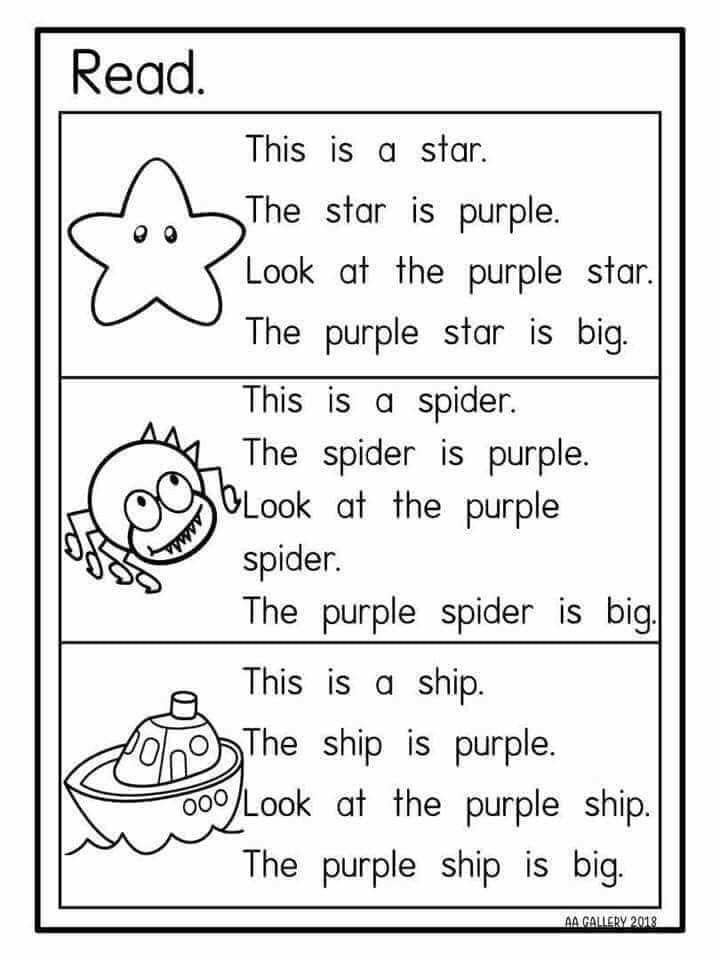 So, look at how a child reacts to reading, too. For example, kids who have trouble reading might get anxious when they have to read.
So, look at how a child reacts to reading, too. For example, kids who have trouble reading might get anxious when they have to read.
If you’re concerned about reading skills, find out why some kids struggle with reading.
Related topics
Reading and writing
10 Ways to Build Pre-Reading Skills in Kids
- Share
Here are some fun, simple pre-reading skills activities for preschoolers that are fun for home or school.
There are everyday activities kids should already be doing at home, as well as some other ideas to try.
What is Pre-Reading?
So, what are pre-reading skills?
Before any child can learn to read well and become a competent speller, five pre-reading skills must be mastered in order to lay a proper foundation.
Pre-reading skills are important as they set children up to decode words independently and read with understanding.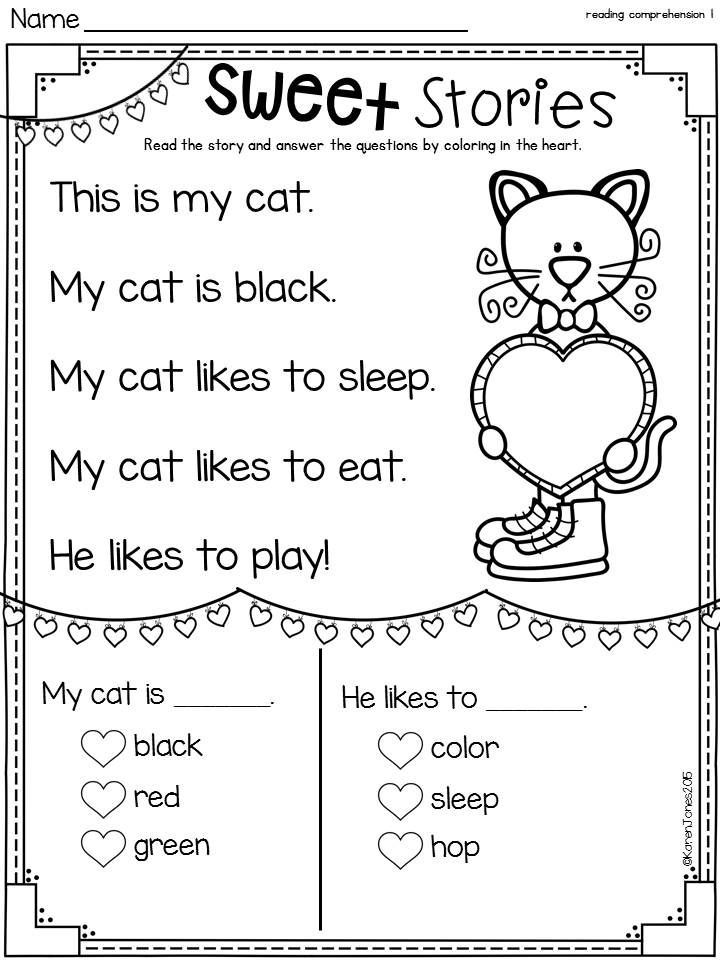 They need to be developed before teaching a child to read.
They need to be developed before teaching a child to read.
They are important for school readiness and early literacy development.
What are the 5 Pre-Reading Skills?
These are the five main pre-reading skills that every student must master before learning to read, as listed in the article Reading readiness: The Top 5 Skills, by All About Learning Press.
1.
Print AwarenessPrint awareness is the understanding that letters form words and that these words have meaning when they are read.
It is knowing that the four letters on a stop sign have a message and that the words in a book tell a story or provide information.
There is also an understanding of the order of reading as they watch people read from left to right, and cover to cover.
2.
Motivation to ReadThe desire to decode words and understand what is in a book is essential before a child learns to read.
A baby is too young and does not yet have the motivation to want to decode the words in his plastic bath book.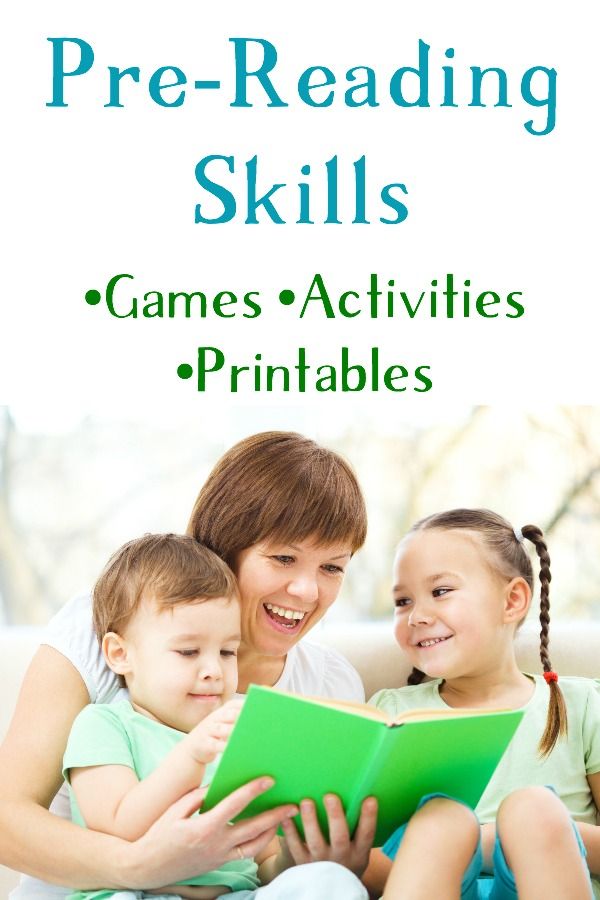
Older children who have developed print awareness, and have listened to their parents read bedtime stories, will want to start understanding the words on the pages themselves.
This skill must be fostered until children develop a healthy desire to read.
3.
Listening ComprehensionWhen a child is able to ask and answer questions about a story or summarize what they have read or heard, they have developed listening comprehension.
4.
Letter KnowledgeKnowing the difference between upper-case and lower-case letters and recognizing letters and their sounds, forms the basis of letter knowledge.
Without this, words cannot be decoded and sounds cannot be blended together.
5.
Phonological AwarenessThis refers to hearing the different sounds in words (beginning sounds, end sounds, rhyming patterns, middle sounds and individual sounds).
Good phonological awareness means children are able to blend sounds together, decode them and manipulate them.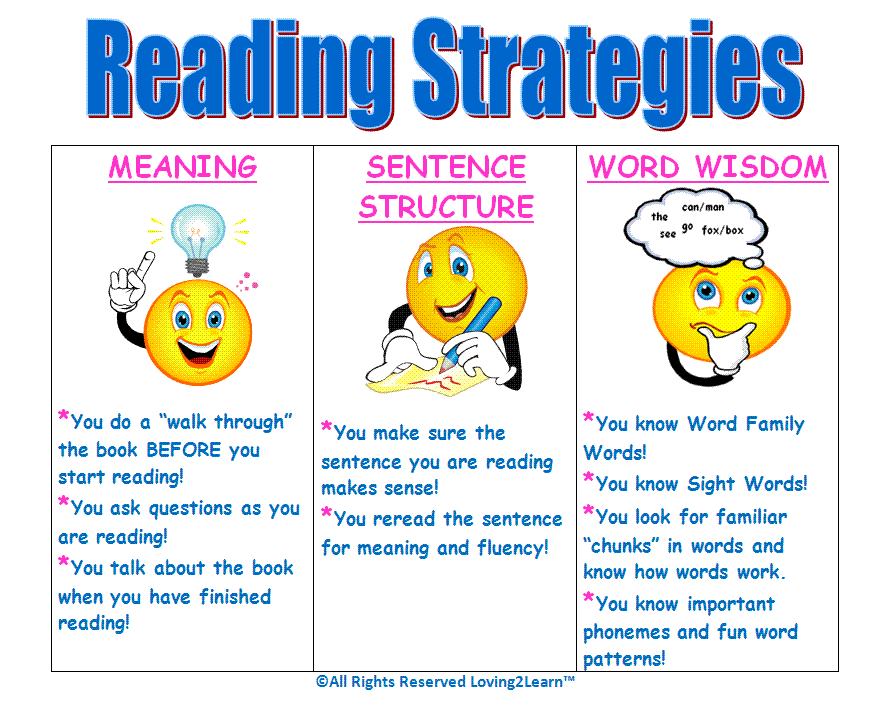
These five skills can be developed from a very young age in many easy ways.
Here are some ideas, starting with basic activities to develop print awareness, motivation and listening comprehension, and moving on to more advanced activities that build letter knowledge and phonological awareness.
10 Pre-Reading Skills Activities for Preschoolers
Here are some simple activities for pre-reading skills. They are also suitable for kindergarteners.
Many of these activities are inspired by the ideas in the Phonological Awareness Package, compiled by Jane Sheils and Yvonne Sawyers.
1.
Read to Children Every DayIt’s never too early to start reading to your children.
Initially, it may just be soothing to listen to you read as your baby falls asleep, but as our child grows he will get used to the idea that the book represents a message.
When reading to your older children, even those who can already read, you will be instilling a love for books and showing that you value time to read together.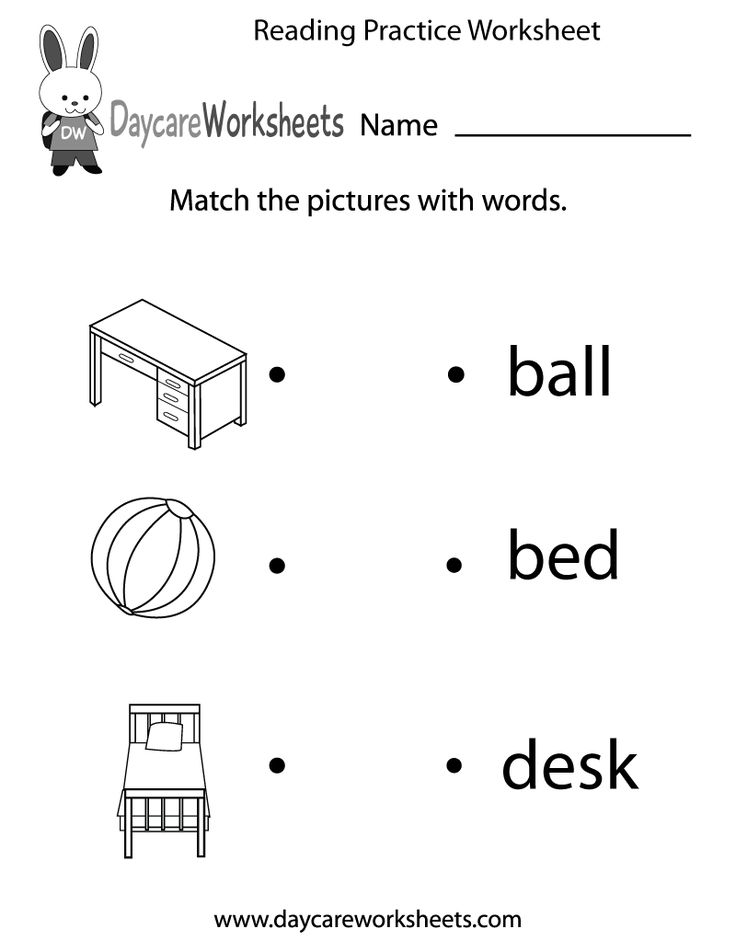
Read your kids these fun rhymes about books. They are all about the magic of reading.
2.
Ask Questions While ReadingDevelop listening comprehension and stimulate higher-order thinking skills by asking questions while reading.
Make sure to incorporate a variety of question types, such as cause-and-effect questions, predictions and opinions.
3.
Point Out Print in the EnvironmentThere are several ways to do this:
- Read the road signs as you drive and discuss what they mean. What would happen if people couldn’t read the sign that says “Beware of school children crossing the road”?
- Discuss the labels on your groceries. Why does the chemical cleaner have warning words? How do you know how much sugar is in your cereal?
- Discuss books. How do you know who is the author of a book? How do you know what the book is about before you read it? Which cover is the front cover and which is the back cover?
- Open the mail together (letters and emails).
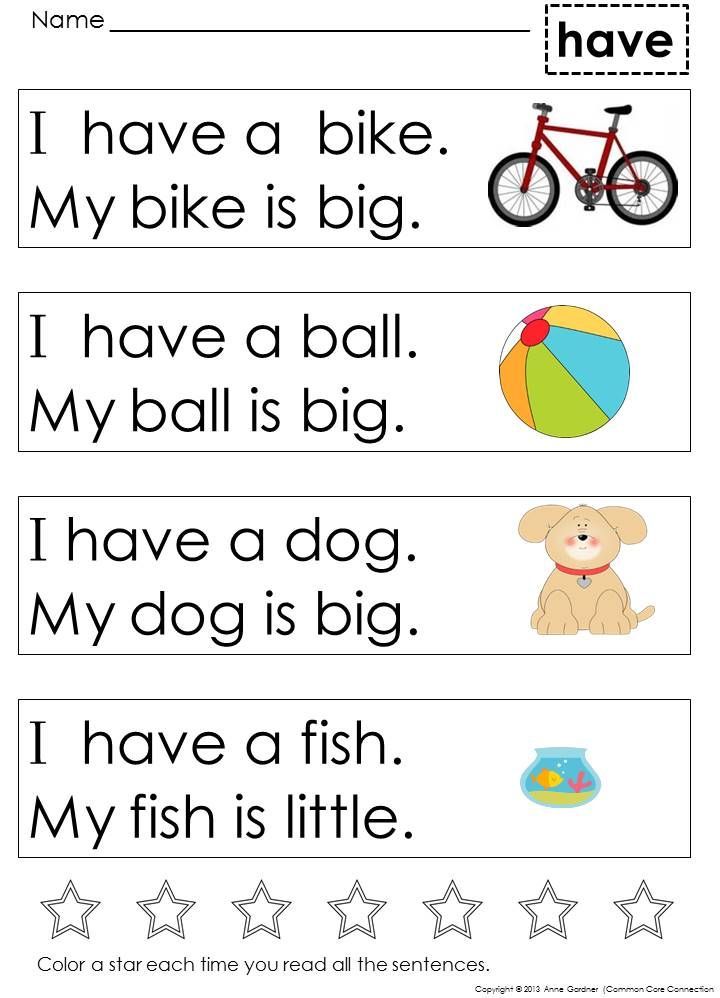 Who are these letters from? What message do they have for me? How do I know how much I need to pay for electricity usage this month?
Who are these letters from? What message do they have for me? How do I know how much I need to pay for electricity usage this month?
This post contains affiliate links for educational products that I personally recommend. If you purchase through one of them, I earn a commission at no extra cost to you. Read the terms and conditions for more details.
4. Learn the Letters- Play with magnetic letters, letter tiles, stamps, letter cut-outs and shapes.
- Teach your child the letters in their name.
- Learn the alphabet song.
- Think of nouns that start with each letter.
- Use alphabet charts to compare upper-case and lower-case letters.
5.
Learn Rhymes and PoemsRhymes, songs and poems are a great way to start introducing rhyming words. They help children learn to read. Point out the sets of rhyming words as you sing them.
Make up new rhymes with simple patterns such as an (can, man, ran, pan) or ip (tip, rip, lip, sip).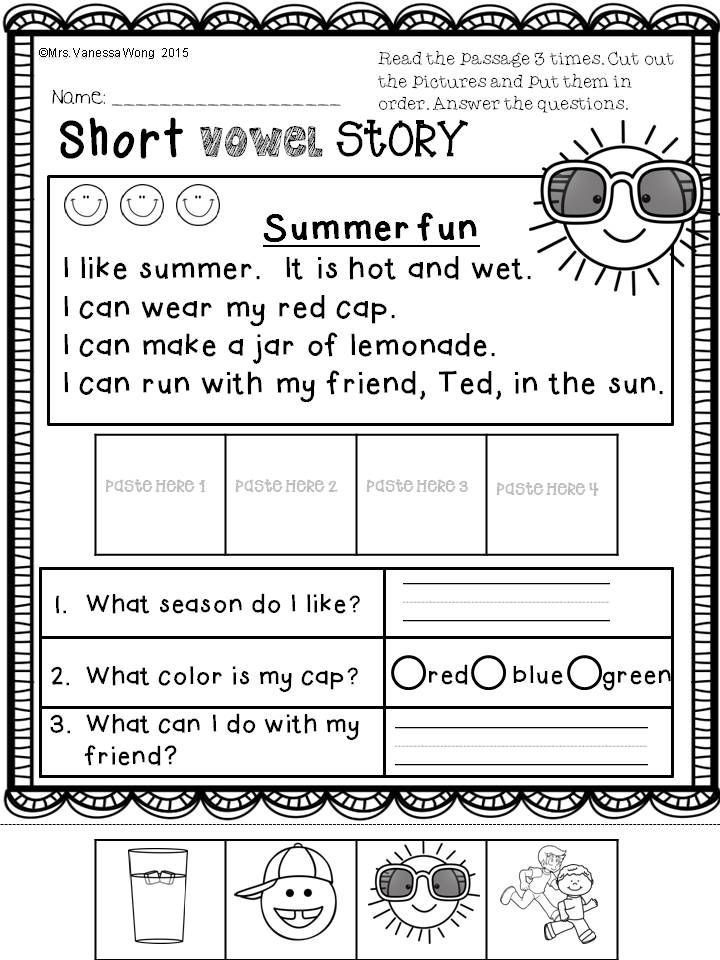
When your child is old enough to play with sounds, move on to rhyming games.
6.
Play Rhyming Games- Find rhyming words – Say the word cat. What sound does cat end in? What other words end in at – mat, pat, rat, etc.
- Identify words that don’t rhyme – Say three words e.g. lap, map, hop. Which word doesn’t fit in?
- Finish the sentences with a rhyming word – Finish the sentence by finding a word that rhymes with cat: My cat is wearing a _____?
7.
Develop Listening SkillsDevelop listening skills by asking your child to listen to a word, remember it and then remove part of it, mentally. Use compound words at first.
Here is an example of the instructions to give:
- Say jellyfish
- Now say jellyfish again but without jelly.
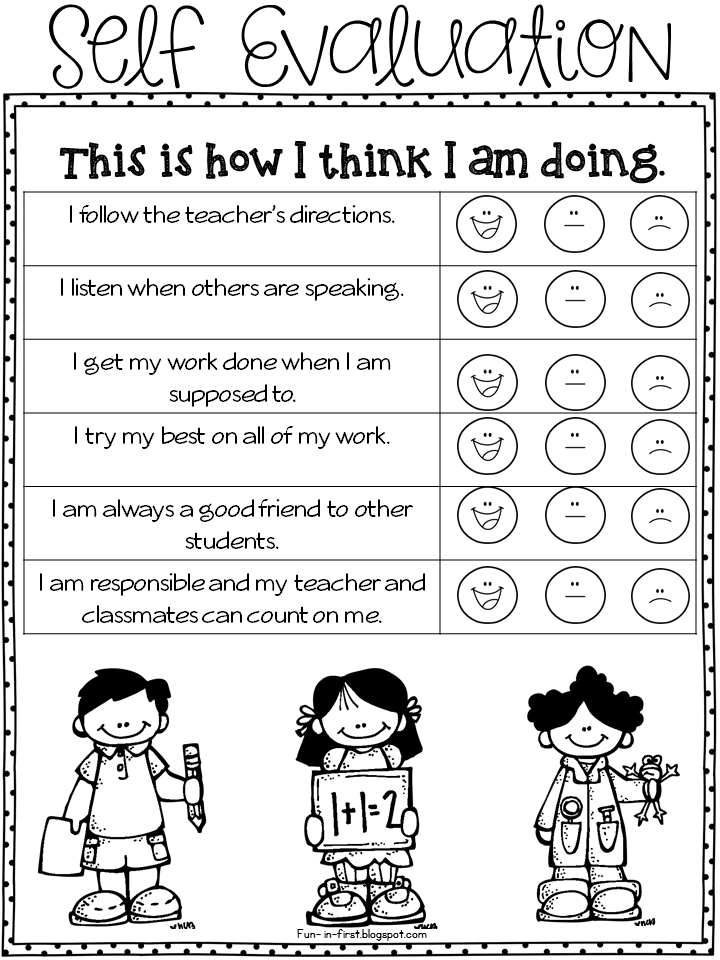
- Answer: fish
This can be very difficult at first but is an excellent activity for developing listening and the ability to manipulate sounds.
Give the answer at first until the concept is understood, and your child can do it independently.
8.
Hear Sounds in WordsStart by listening for the beginning sound in words:
- Write down two sounds or use two letter tiles.
- Say a simple, 3-letter word and ask which sound the word begins with.
- Your child must either circle the letter or point to it and say it out loud.
Then, follow the same procedure and listen for the end sound.
And finally, identify the middle sound.
Vary this activity by saying just one sound (e.g. ‘t’) and asking where the sound is in the word – beginning, middle or end.
9.
Manipulate SoundsWhen your child is able to identify sounds and hear them at the beginning, end and middle of words, she is then ready to manipulate sounds.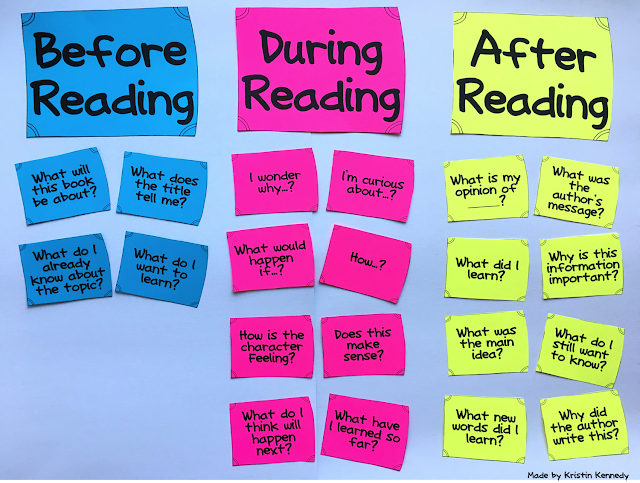 Here is an example:
Here is an example:
- Say cat
- Now change the c to a m
- What do you hear?
- Answer: mat
Make sure you are using the actual sound, not the letter name (mm, not em)
- Say ham
- Now change the m to a t
- What do you hear?
- Answer: hat
10.
Blend and Decode SoundsThe final step is sounding out words and blending letters. These activities can be done with letter tiles.
Sounding out/decoding:
- p-e-n (pen)
- c-a-t (cat)
Blending:
This activity can be done with letter tiles. Place an e and d together to form ed, then add new letters to the beginning to make new words.
- b-ed (bed)
- r-ed (red)
- l-ed (led)
When children have the phonological awareness to decode words, then they are ready to read!
I hope you enjoyed these preschool and kindergarten pre-reading activities.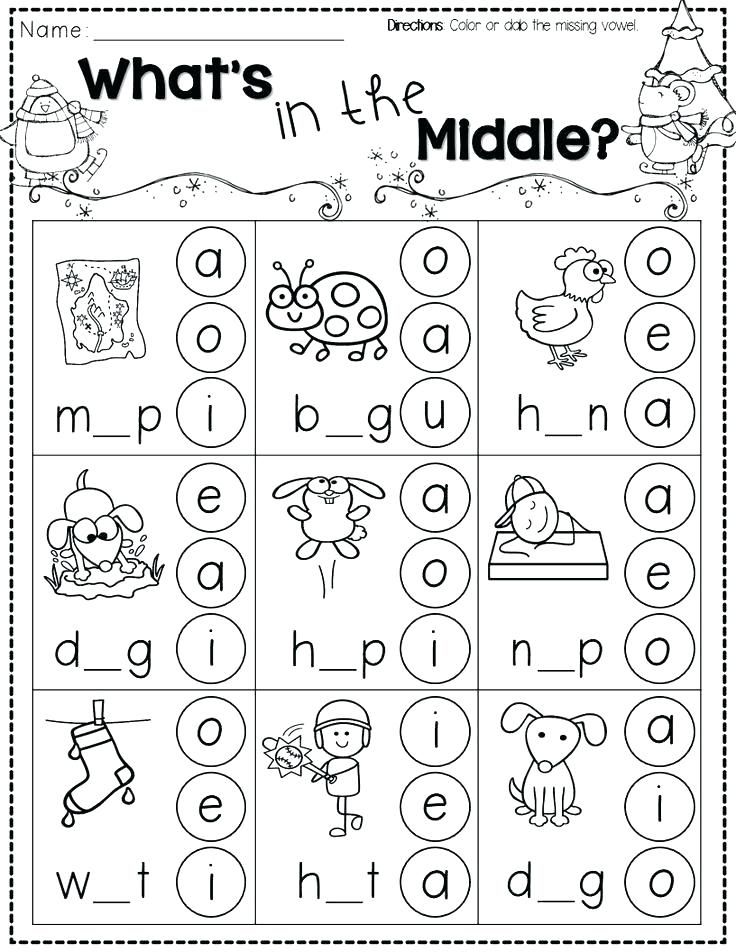
Remember that pre-reading and pre-writing skills are both important to develop before introducing formal instruction to young children.
Get FREE access to Printable Puzzles, Stories, Activity Packs and more!
Join Empowered Parents + and you’ll receive a downloadable set of printable puzzles, games and short stories, as well as the Learning Through Play Activity Pack which includes an entire year of activities for 3 to 6-year-olds.
Access is free forever.
Signing up for a free Grow account is fast and easy and will allow you to bookmark articles to read later, on this website as well as many websites worldwide that use Grow.
- Share
Formation of reading skills in children: stages and exercises
Primary school is a special stage in the life of any child, which is associated with the formation of the basics of his ability to learn, the ability to organize his activities.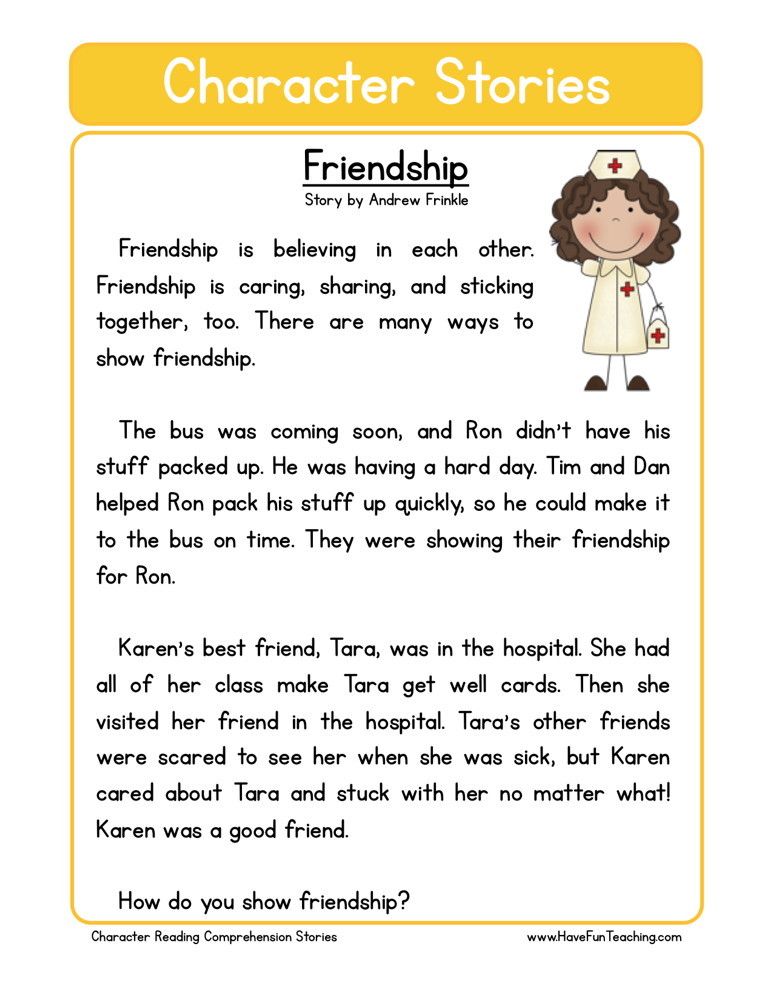 It is a full-fledged reading skill that provides the student with the opportunity to independently acquire new knowledge, and in the future creates the necessary basis for self-education in subsequent education in high school and after school.
It is a full-fledged reading skill that provides the student with the opportunity to independently acquire new knowledge, and in the future creates the necessary basis for self-education in subsequent education in high school and after school.
Interest in reading arises when a child is fluent in conscious reading, while he has developed educational and cognitive motives for reading. Reading activity is not something spontaneous that arises on its own. To master it, it is important to know the ways of reading, the methods of semantic text processing, as well as other skills. nine0003
Reading is a complex psychophysiological process in which visual, speech-auditory and speech-motor analyzers take part. A child who has not learned to read or does it poorly cannot comprehend the necessary knowledge and use it in practice. If the child can read, but at the same time he does not understand what he read, then this will also lead to great difficulties in further learning and, as a result, failure at school.
Reading begins with visual perception, discrimination and recognition of letters. This is the basis on the basis of which the letters are correlated with the corresponding sounds and the sound-producing image of the word is reproduced, i.e. his reading. In addition, through the correlation of the sound form of the word with its meaning, the understanding of what is read is carried out. nine0003
Stages of developing reading skills
T.G. Egorov identifies several stages in the formation of reading skills:
- Acquisition of sound-letter designations.
- Reading by syllable.
- The formation of synthetic reading techniques.
- Synthetic reading.
The mastery of sound-letter designations occurs throughout the entire pre-letter and literal periods. At this stage, children analyze the speech flow, sentence, divide it into syllables and sounds. The child correlates the selected sound from speech with a certain graphic image (letter).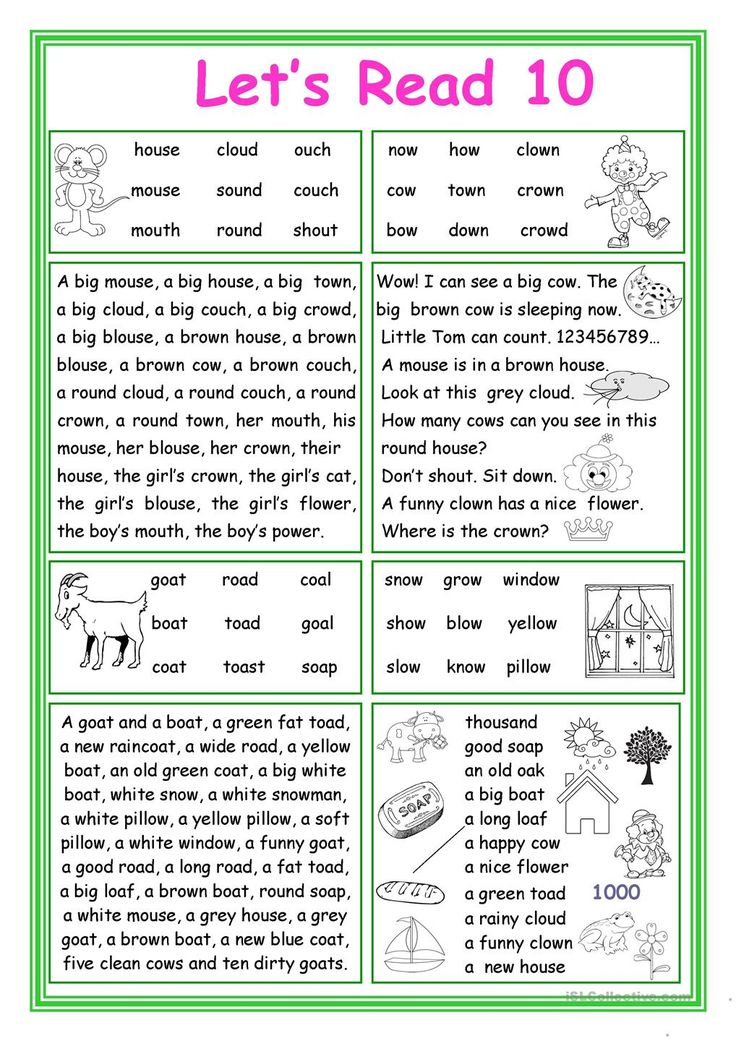 nine0003
nine0003
Having mastered the letter, the child reads the syllables and words with it. When reading a syllable in the process of merging sounds, it is important to move from an isolated generalized sound to the sound that the sound acquires in the speech stream. In other words, the syllable must be pronounced as it sounds in oral speech.
At the stage of syllable-by-syllable reading, the recognition of letters and the merging of sounds into syllables occurs without any problems. Accordingly, the unit of reading is the syllable. The difficulty of synthesizing at this stage may still remain, especially in the process of reading long and difficult words. nine0003
The stage of formation of synthetic reading techniques is characterized by the fact that simple and familiar words are read holistically, but complex and unfamiliar words are read syllable by syllable. At this stage, frequent replacements of words, endings, i.e. guessing reading takes place. Such errors lead to a discrepancy between the content of the text and the read.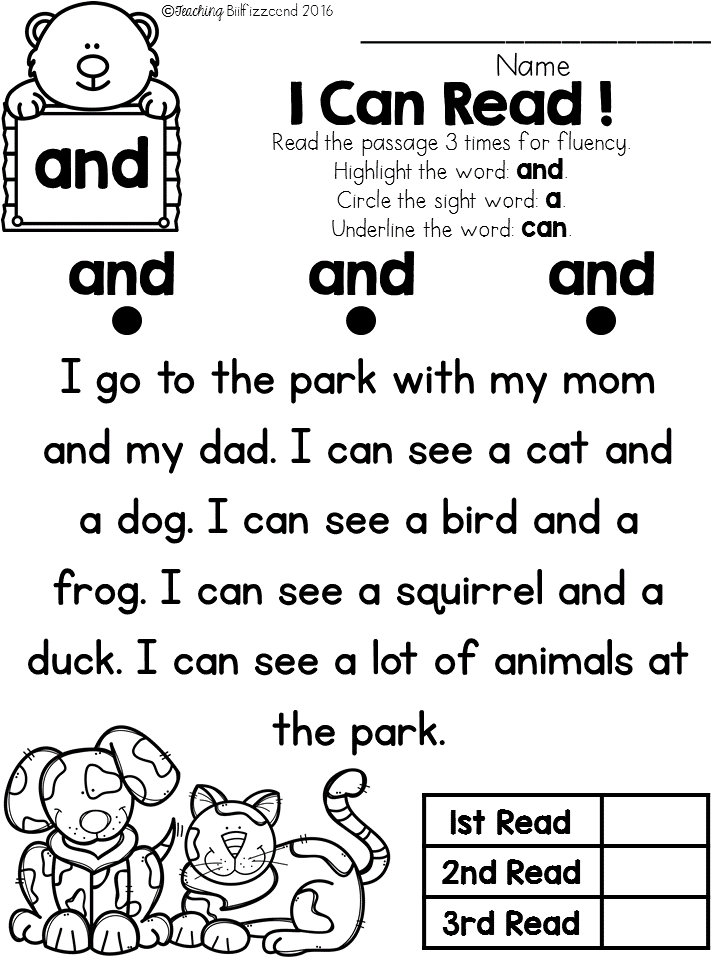
The stage of synthetic reading is characterized by the fact that the technical side of reading is no longer difficult for the reader (he practically does not make mistakes). Reading comprehension comes first. There is not only a synthesis of words in a sentence, but also a synthesis of phrases in a general context. But it is important to understand that understanding the meaning of what is read is possible only when the child knows the meaning of each word in the text, i.e. Reading comprehension directly depends on the development of the lexico-grammatical side of speech. nine0003
Features of the formation of reading skills
There are 4 main qualities of reading skill:
- Correct. By this is understood the process of reading, which occurs without errors that can distort the general meaning of the text.
- Fluency. This is reading speed, which is measured by the number of printed characters that are read in 1 minute.
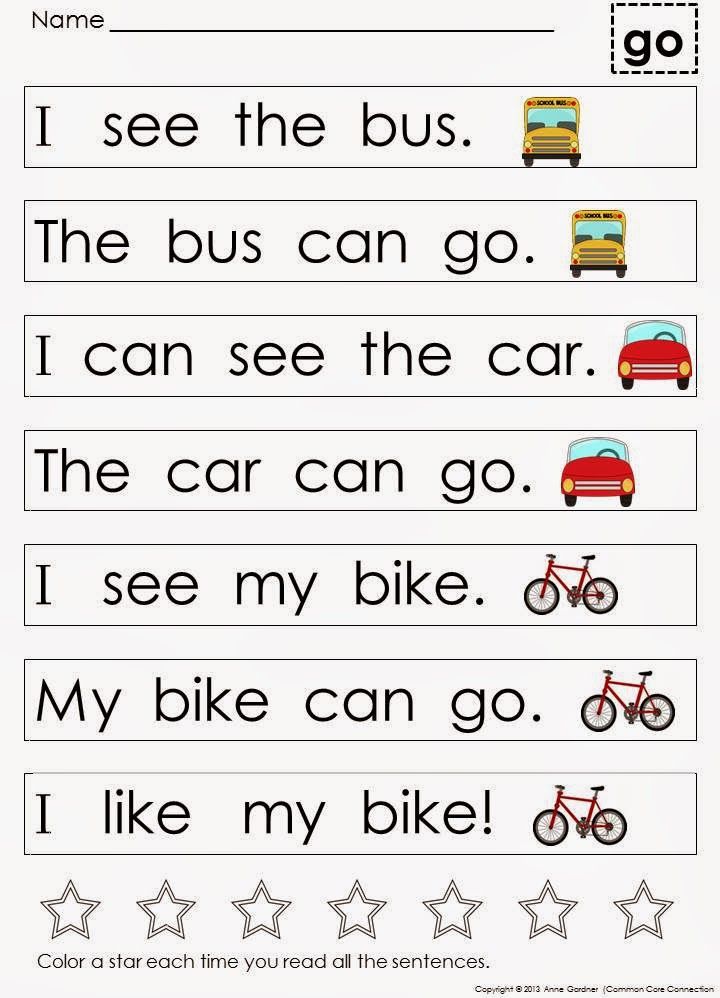
- Consciousness. It implies understanding by the reader of what he reads, artistic means and images of the text. nine0020
- Expressiveness. It is the ability by means of oral speech to convey the main idea of the work and one's personal attitude to it.
Accordingly, the main task of teaching reading skills is to develop these skills in schoolchildren.
All education in the primary grades is based on reading lessons. If the student has mastered the skill of reading, speaking and writing, then other subjects will be given to him much easier. Difficulties during training arise, as a rule, due to the fact that the student could not independently obtain information from books and textbooks. nine0003
Methods and exercises for developing reading skills
In educational practice, there are 2 fundamentally opposite methods of teaching reading - linguistic (the method of whole words) and phonological.
Linguistic method teaches the words that are most commonly used, as well as those that are read the same as they are written.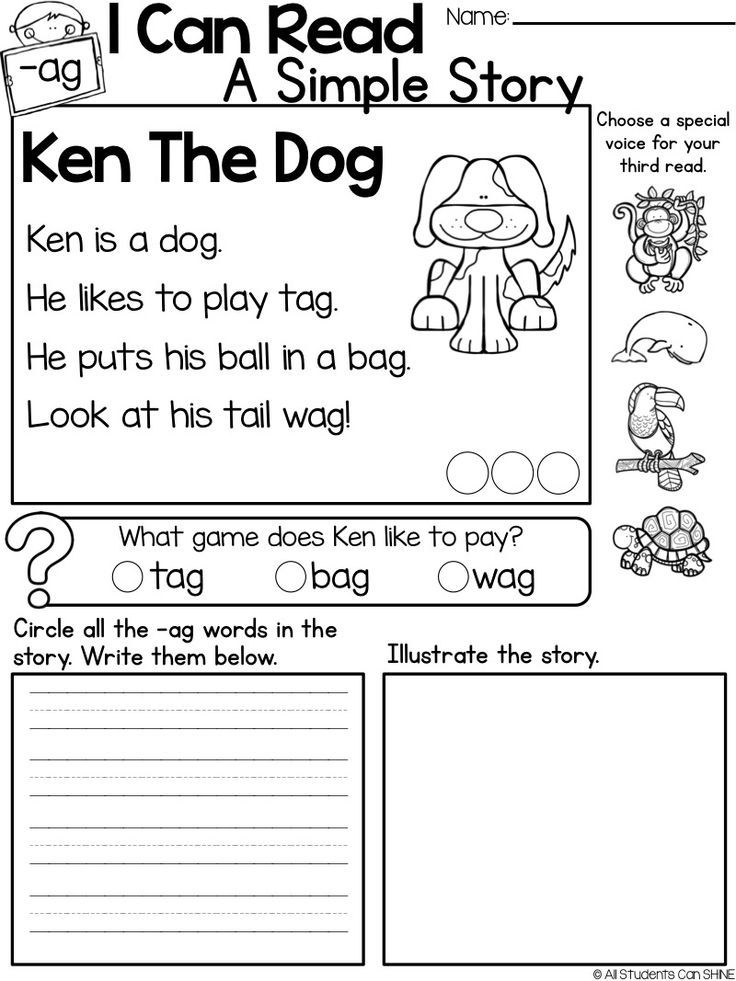 This method is aimed at teaching children to recognize words as whole units, without breaking them into components. The child is simply shown and said the word. After about 100 words have been learned, the child is given a text in which these words are often found. In our country, this technique is known as the Glenn Doman method. nine0003
This method is aimed at teaching children to recognize words as whole units, without breaking them into components. The child is simply shown and said the word. After about 100 words have been learned, the child is given a text in which these words are often found. In our country, this technique is known as the Glenn Doman method. nine0003
The phonetic approach is based on the alphabetical principle. Its basis is phonetics, i.e. learning to pronounce letters and sounds. As knowledge is accumulated, the child gradually moves to syllables, and then to whole words.
Reading begins with visual perception, discrimination and recognition of letters. This is the basis on the basis of which the letters are correlated with the corresponding sounds and the sound-producing image of the word is reproduced, i.e. his reading. In addition, through the correlation of the sound form of the word with its meaning, the understanding of what is read is carried out. nine0003
In addition, there are several other methods:
- Zaitsev method .
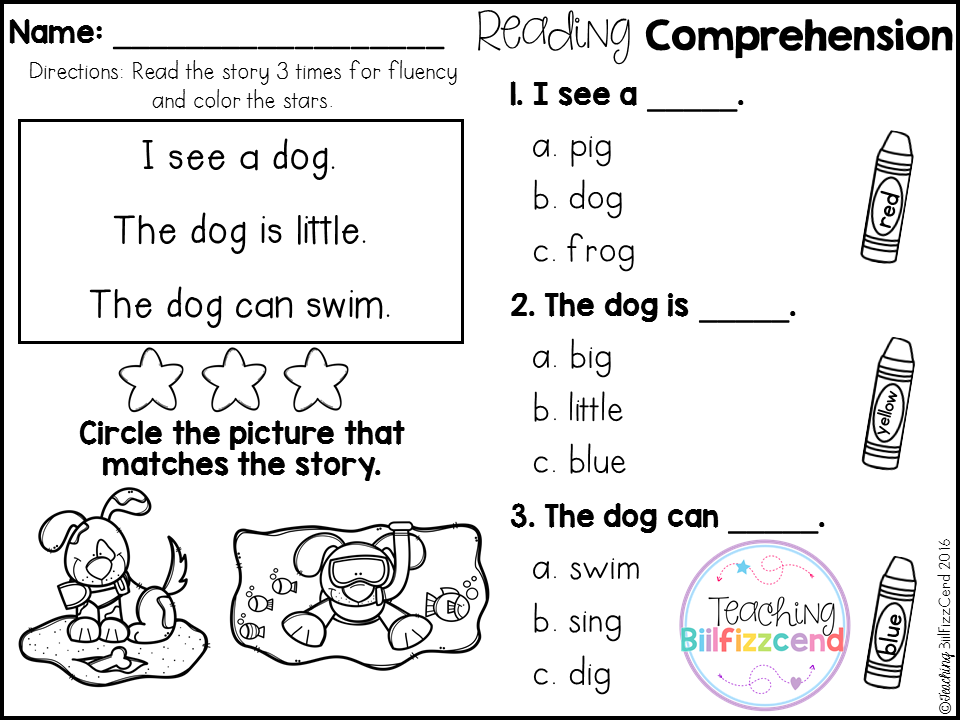 It involves teaching children warehouses as units of language structure. A warehouse is a pair of a consonant and a vowel (either a consonant and a hard or soft sign, or one letter). Warehouses are written on different faces of the cube, which differ in size, color, etc.
It involves teaching children warehouses as units of language structure. A warehouse is a pair of a consonant and a vowel (either a consonant and a hard or soft sign, or one letter). Warehouses are written on different faces of the cube, which differ in size, color, etc. - Moore method. Learning begins with sounds and letters. The whole process is carried out in a specially equipped room, where there is a typewriter that makes sounds and names of punctuation marks and numbers when a certain key is pressed. Next, the child is shown a combination of letters that he must type on a typewriter. nine0020
- Montessori method. It involves teaching children the letters of the alphabet, as well as the ability to recognize, write and pronounce them. After they learn how to combine sounds into words, they are encouraged to combine words into sentences. The didactic material consists of letters that are cut out of rough paper and pasted onto cardboard plates. The child repeats the sound after the adult, after which he traces the outline of the letter with his finger.
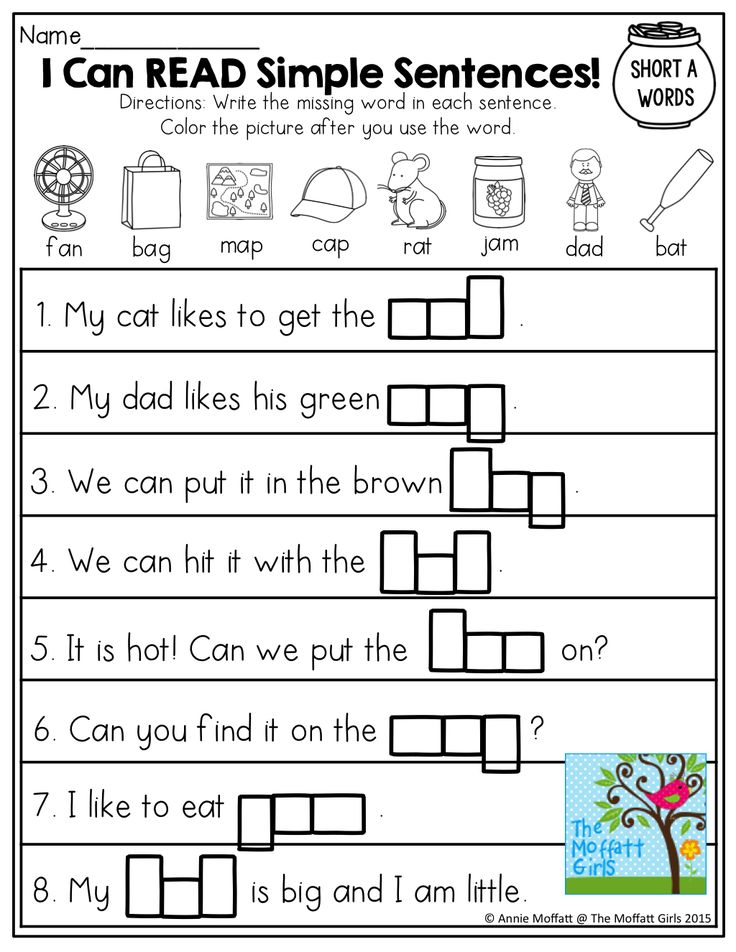
- Soboleva O.L. This method is based on the “bihemispheric” work of the brain. By learning letters, children learn them through recognizable images or characters, which makes it especially easy for children with speech disorders to learn and remember letters. nine0020
There is no universal methodology for developing reading skills. But in modern teaching methods, a general approach is recognized when learning begins with an understanding of sounds and letters, i.e. from phonetics.
There are certain exercises that help build reading skills. Here are a few of them:
- Reading lines backwards letter by letter. nine0016 The exercise contributes to the development of letter-by-letter analysis. The meaning is simple - the words are read in reverse order, i.e. from right to left.
- Reading through the word. You do not need to read all the words in a sentence, but jumping over one.
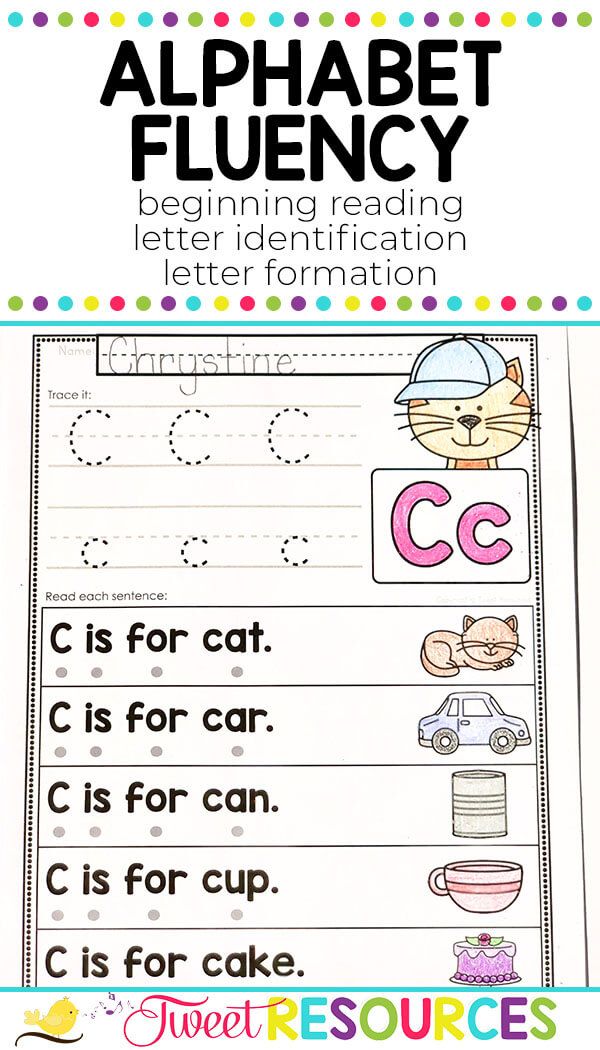
- Reading dotted words. Words are written on the cards, but some letters are missing (dotted lines are drawn instead).
- Read only the second half of the word. Read only the second part of the word, the first part is omitted. The exercise contributes to the understanding that the second part of the word is no less important than the first, thereby preventing the omission (or reading with distortion) of the endings of words in the future. nine0020
- Reading lines with the upper half covered. A sheet of paper is superimposed over the text so that the top of the stitching is covered.
- Fast and multiple repetition. The child should repeat a line of a poem or a sentence aloud as quickly as possible and several times in a row. Correct pronunciation is extremely important, so if necessary, you need to stop and correct the child.
- Find the words in the text. nine0016 The child is faced with the task of finding words in the text as quickly as possible.
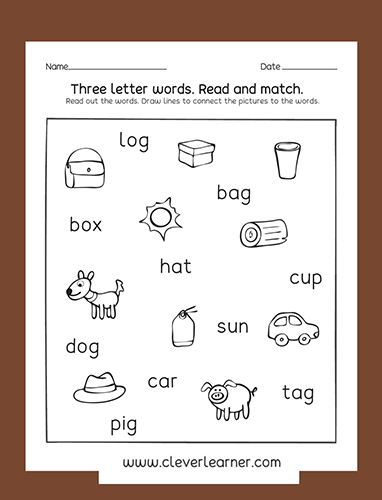 First, they are shown in pictures, then voiced by the teacher.
First, they are shown in pictures, then voiced by the teacher. - Buzzing reading. The text is read by all students aloud, but in an undertone.
A. Herzen wrote: “Without reading, there is no real education, no, and there can be neither taste, nor style, nor the many-sided breadth of understanding.”
Indeed, mastering a full-fledged reading skill is the most important condition for success in basic subjects at school. At the same time, this is one of the main ways of obtaining information, which is vital for the speech, mental and aesthetic development of children. nine0016
____________________________________________
We are waiting for you in our speech center! We are always glad to you and your kids.
Call us: 8 (962) 758-53-62, 8 (909) 391-08-08
Learning to read - A set of games and tasks to develop reading skills
In the section "Teaching to read" you will find a lot of interesting educational materials for children of preschool and primary school age.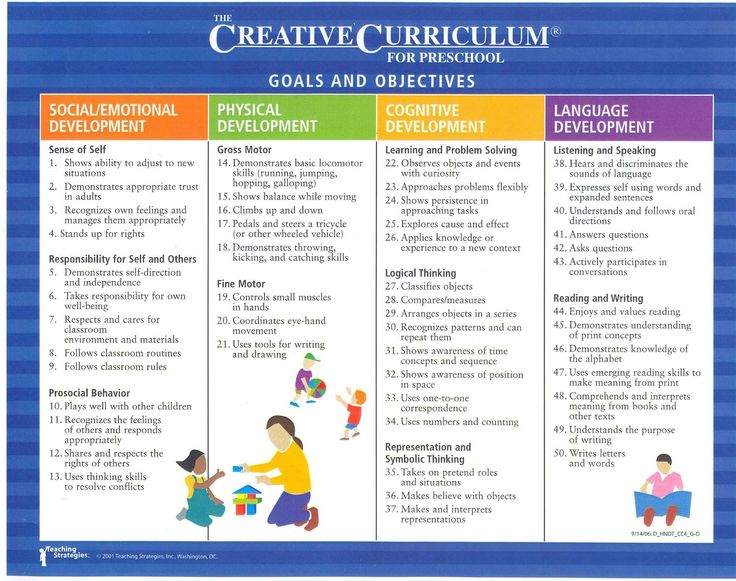 Here are a variety of printable educational materials designed to teach preschoolers to read, as well as to test the child's level of knowledge in the humanities. These tasks are suitable for regular homework with the child, developing his speech and intellectual abilities, as well as fully preparing him for the school curriculum. nine0003
Here are a variety of printable educational materials designed to teach preschoolers to read, as well as to test the child's level of knowledge in the humanities. These tasks are suitable for regular homework with the child, developing his speech and intellectual abilities, as well as fully preparing him for the school curriculum. nine0003
Also in this section you will find classes to develop reading skills and verbal-logical thinking. This category contains printable tasks that educators can use as didactic material for working with a group of children. Teaching reading to preschoolers is always faster and more effective when it sparks a child's interest. So do not neglect the variety of materials presented to make classes with your child more fun and interesting.
Making a word from letters - Reading task
In this section you will find many tasks, in each of which you need to make a word from letters. In some tasks, you need to compose words from given letters, and in some you need to learn the letters yourself (by the first letter of each word-picture).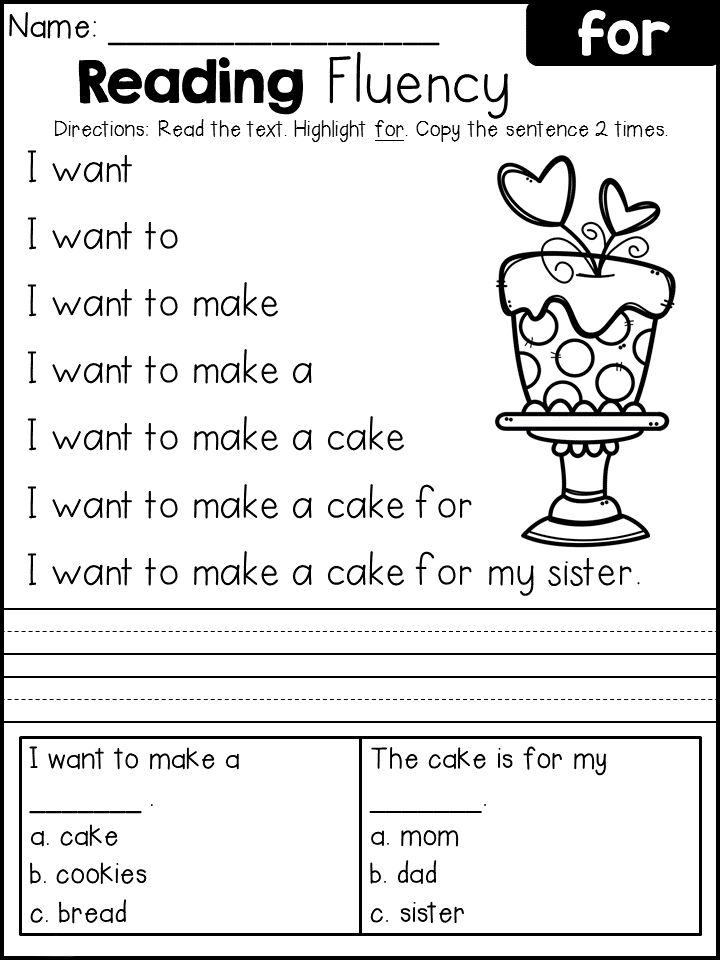 There are also tasks in which you need to make words from mixed letters or find hidden words.
There are also tasks in which you need to make words from mixed letters or find hidden words.
Stories with pictures instead of words for children
Here you can download short stories for children with pictures instead of words for children of preschool and primary school age. When reading the presented stories, you need to insert the right words instead of pictures. This kind of learning to read is very interesting for children who are learning to read. nine0003
Russian alphabet in order for preschoolers
Here we will study the Russian alphabet in order, from the letter A to the letter Z. Two letters are given on each worksheet. Each letter corresponds to several pictures. You need to circle only those picture words that begin with a given letter.
Learning the Russian alphabet
In this section you can download materials that will help you learn the Russian alphabet easily and simply. Here are special tasks for teaching the Russian alphabet, and cards with letters for printing, and much more .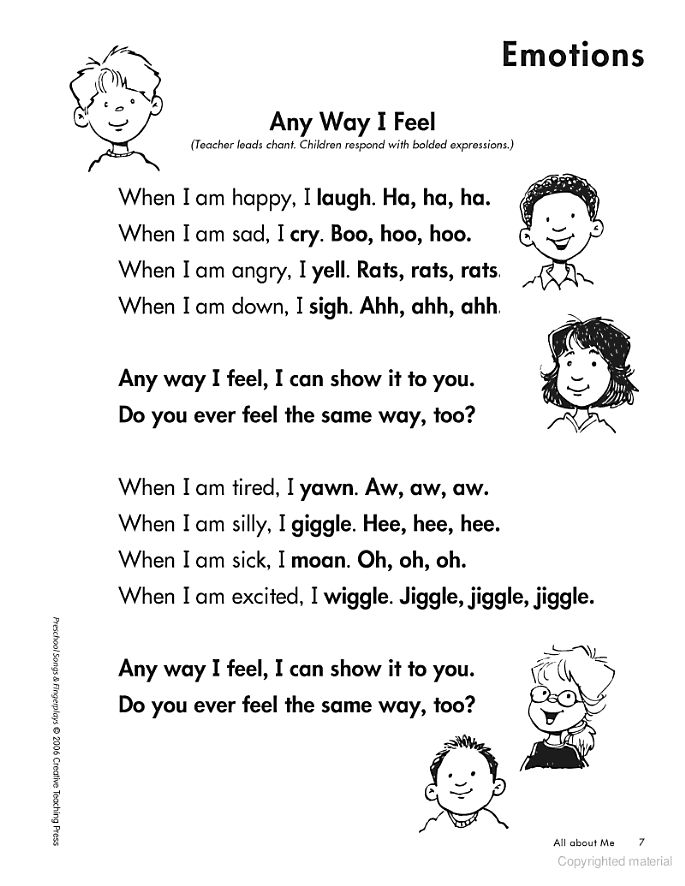 ..
..
Find a word by spelling in a square
In these colorful reading tasks, your child needs to use pictures to spell out a word in a special square where the letters are arranged in a chaotic order. Each search word corresponds to one picture outside the square. The order of letters in words can be horizontal, vertical and diagonal. Here you need not only to be able to read words, but also to be very careful to find them...0173
Read by syllables are activities and printouts that teach children how to form words from syllables. Here you can download various tasks, print on a printer and work with your child following the instructions for each task.
Semantic reading - Working with text for children
Here you have to complete tasks for semantic reading. Working with text is a very important stage in teaching children to read. In these tasks, the child will practice finding synonyms and antonyms for words, understand and interpret the meaning and meaning of words and sentences, summarize and name the signs of objects, analyze the read text and answer questions asked about it, learn to compose sentences and stories, write dictations and much more other.